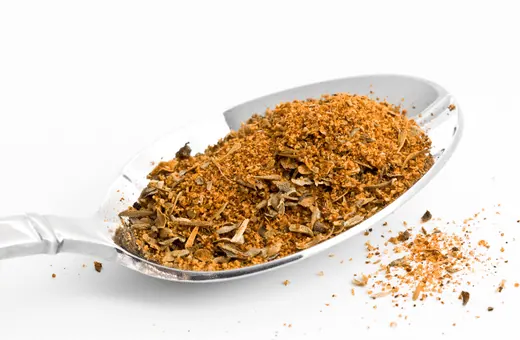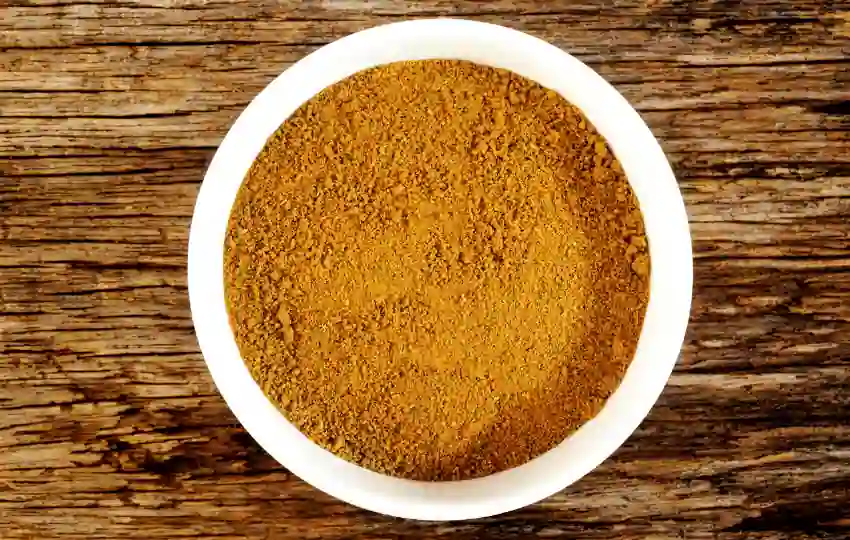Do you need a creole seasoning substitute because you’re all out and don’t want to run to the store? Maybe you have some on hand, but it’s past its expiration date.
No matter the reason, there are many substitutes for creole seasoning that you probably already have in your spice cupboard. With these substitutes, you can make any dish that calls for creole seasoning.
Here are some of the best substitutions for Creole seasoning.
What is Creole Seasoning? What is Creole seasoning made from?
Creole seasoning is a blend of spices commonly used in Louisiana cuisine. It typically consists of paprika, garlic powder, onion powder, black pepper, cayenne pepper, oregano, thyme, and salt.
The precise combination of spices can vary greatly depending on the recipe or chef.
Creole seasoning is often used to season meats and seafood before cooking, as well as used in sauces and other dishes to add a unique flavor.
It can also be utilized as a garnish for salads or soups or sprinkled over popcorn or french fries. This seasoning blend is extremely multipurpose and can help to elevate even the simplest of dishes.
What does Creole seasoning taste like?
Creole seasoning has a unique blend of spices, herbs, and peppers which gives it an unmistakable flavor.
The combination of the flavors creates a complex yet balanced taste that adds a little heat, a hint of sweetness, and lots of savory flavor to whatever it is used on.
It’s also great for adding an extra layer of flavor to dishes like jambalaya, gumbo, shrimp etouffée, and more.
Creole seasoning is most popular in the southern United States, particularly in Louisiana, where it originated. However, it’s now used in many cuisines around the world and is a staple of many home kitchens.
With its unique and tasty flavor, Creole seasoning is sure to spice up any dish!
Best Creole Seasoning Substitutes You Can Try
1. Homemade Creole seasoning
The best way to make Creole seasoning at home is to start with a basic dry rub recipe. You can then add in more spices and herbs as you like, depending on the taste profile that you are aiming for.
To make your own Creole seasoning, simply combine 1 tablespoon of paprika, 2 teaspoons of salt, 1 teaspoon each of dried oregano, thyme, and basil, and ½ teaspoon each of garlic powder and black pepper in a small bowl.
Use this mixture to season meats before grilling or roasting them.
Another option is to mix together ¼ cup paprika, 3 tablespoons kosher salt, 2 tablespoons garlic powder or granulated garlic, 2 tablespoons onion powder, 1 tablespoon freshly ground black pepper, 1 tablespoon dried oregano, 1 teaspoon cayenne pepper, and ¼ cup freshly minced parsley in a bowl or jar.
This mixture can be used as a dry rub on meats before grilling or roasting, or it can be added to soups and stews for extra flavor.
2. Cajun Seasoning
Cajun seasoning is a combination of spices that is popular in Louisiana Creole cuisine.
The exact ingredients vary depending on the brand or recipe but usually include paprika, garlic powder, onion powder, black pepper, cayenne pepper, and dried oregano.
Creole seasoning is similar to Cajun seasoning but often includes thyme and basil in addition to the aforementioned spices.
While both seasonings are typically used to add flavor to meats and vegetables, Cajun seasoning is more commonly used in dishes that are fried or grilled.

On the other hand,Creole seasoning is more commonly used in dishes that are cooked in a tomato-based sauce.
In terms of flavor, Cajun seasoning is generally spicier than Creole seasoning.
However, both seasonings can be adjusted to taste by adding more or less of the individual spices. For example, if you want a spicier dish, you could add more cayenne pepper to your Cajun seasoning blend.
Conversely, if you want a milder dish, you could omit the cayenne pepper from your Creole seasoning blend. Ultimately, whether you use Cajun seasoning or Creole seasoning is a matter of personal preference.
3. I substitute old bay seasoning for creole seasoning
Old Bay seasoning is a great substitution for creole seasoning. It has a similar flavor profile, with a slightly salty and tangy taste.
Old bay seasoning is a popular spice blend that consists of several ingredients. It is typically used for flavoring seafood such as shrimp, crabs, lobster, and salmon.
The composition of the spice blend varies depending on the region or brand used.
Some of the basic ingredients include celery salt, paprika, black pepper, and red pepper. Some brands also contain additional ingredients such as ginger, mace, bay leaves, allspice, and turmeric.
It can be used to flavor other types of food in addition to seafood, such as popcorn and even French fries.
A popular way to enjoy old bay seasoning is by preparing crabs and combining them with other ingredients, such as mayonnaise, mustard sauce, or melted butter.
The spice blend can also be added to soups, stews, and salads. Some people prefer sprinkling it on their food at the table rather than adding it during the cooking process.
4. Adobo Seasoning
Adobo seasoning is a versatile spice blend that can be used in place of creole seasoning in many recipes. The key ingredients in adobo seasoning are garlic, onion, paprika, cumin, and oregano.
These spices provide a similar flavor profile to creole seasoning, with a slight smokiness from the paprika and a bit of heat from the cumin.
Adobo seasoning can be used to flavor meat, poultry, fish, and vegetables. It is also a common ingredient in Latin American and Caribbean dishes.
If you don’t have creole seasoning on hand, adobo seasoning is a great substitute that will give your dish a similar flavor profile.
5. Chili Powder
When it comes to spice, chili powder is a good substitute for creole seasoning. Chili powder is made from dried peppers, whereas creole seasoning includes paprika, garlic and onion powders, oregano, and cayenne pepper.
The substitution will depend on the dish you’re making. For example, if you’re making a tomato-based dish, chili powder would be a good choice because it would complement the acidity of the tomatoes.

If you’re making a dish that is heavy on the meats, such as sausage or chicken, then you might want to use creole seasoning because it has a saltier flavor that can stand up to the heartiness of the meats.
Ultimately, it’s up to you to choose what spice will work best in your dish. Experiment and see what you like best!
6. Greek seasoning
If you’re out of Creole seasoning and need a substitute for your recipe, Greek seasoning is a good option. It has a similar flavor profile, with notes of paprika, garlic, oregano, and thyme.
Greek seasoning can be used in salads, stews, soups, and other dishes to give them a zesty taste. Utilizing Greek seasonings can also help you cut down on the amount of oil or butter you use to cook your food as well.
To substitute, you may need to adjust the amount you use, depending on the other ingredients in your dish.
For example, if your recipe also calls for cayenne pepper, you may want to use a little less Greek seasoning, as it is already quite spicy.
Overall, though, Greek seasoning is a versatile spice blend that can be used in place of Creole seasoning in most recipes.
Some people may also choose to mix in a variety of fresh herbs to give the food an even fresher flavor, and you can use Greek seasoning on just about any type of meat, fish, or vegetable.
Any way you decide to use it, adding Greek seasoning to your cooking is sure to be a tasty experience for you and your family.
FAQs on creole seasoning substitute
Q1. What is the difference between creole and Cajun seasoning?
Creole and Cajun seasonings are two of the most popular seasonings used in Louisiana cooking. They are both made with a combination of herbs and spices, but there are some key differences between them.
Creole seasoning is typically made with a blend of paprika, garlic powder, onion powder, cayenne pepper, and black pepper. It has a fairly even balance of spice and heat, with the paprika giving it a slightly smoky flavor.
Cajun seasoning, on the other hand, is usually made with a blend of chili powder, paprika, garlic powder, onion powder, cumin, and oregano. It has a bold flavor, with the chili powder giving it a bit more of a kick.
When deciding which seasoning to use in your dish, it is important to consider the overall flavor you are aiming for. If you want a more subtle seasoning, creole is probably the way to go. If you are searching for something with a little more punch, then cajun seasoning is likely your best bet.
Q2. Are creole and jerk seasoning the same?
Many people believe that creole and jerk seasoning are the same, but there are actually a few key differences between the two. Creole seasoning is generally made with a blend of paprika, salt, garlic powder, onion powder, cayenne pepper, black pepper, and oregano.
Jerk seasoning, on the other hand, often contains allspice, cinnamon, nutmeg, and cloves in addition to the aforementioned ingredients. As a result, jerk seasoning has a sweeter and more warming flavor than creole seasoning.
Another difference is that jerk seasoning is typically used to flavor chicken or pork, while creole seasoning is more commonly used in seafood dishes. Ultimately, whether you use creole or jerk seasoning will depend on your personal preferences and the dish you’re trying to create.

